EQ Bass Music Player- KX Music
Immerse in powerful bass with customizable equalizer settings for music lovers.
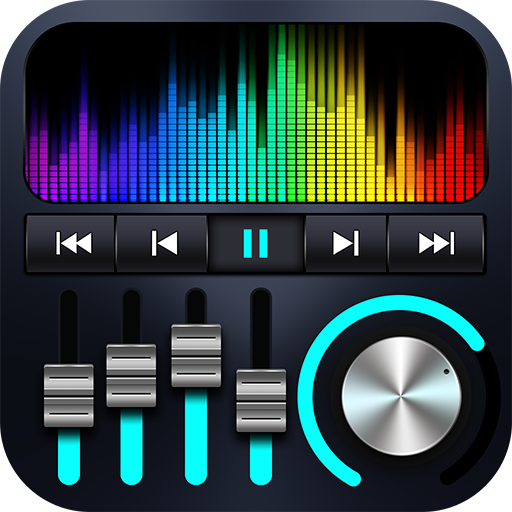
- 2.4.7 Version
- 4.8 Score
- 6M+ Downloads
- Free License
- 3+ Content Rating
Introducing EQ Bass Music Player- KX Music
EQ Bass Music Player - KX Music is the ultimate music player designed for Android devices. Featuring a stunning equalizer, support for various formats, and a sleek user interface. Explore all the songs on your Android device, enjoy music offline, and grab this exceptional free offline music player now! It stands out as one of the most stunning and robust music players for Android!
Supported Formats: MP3, MP4, MP2, MP1, OGG, WAV, AIFF, MIDI, AAC, 3GP, XM, IT, S3M, MOD, MTM, UMX, MO3, M4A, OTA
Noteworthy Features:
🎵 High-quality offline music player, audio player, and mp3 player.
🎛️ Choose from 17 preset music tones.
🎛️ Ten-band equalizer for perfect sound customization.
📣 Notification Status support for convenience.
🎧️ Control with Headset/Bluetooth for ease of use.
🎚️ Reverb effect adds depth to your music.
🎚️ Enjoy left and right music surround effects.
🎚️ Enhance bass with the bass boost effect.
🎚️ Immerse yourself with the Virtualizer effect.
📣 Experience 3D surround sound for a captivating audio experience.
✂️ Edit and trim music files to create personalized ringtones.
📣 Visualize your music with the Stereo LED VU meter.
🔀 Shuffle/repeat mode for non-stop listening pleasure.
🗑️ Delete songs directly from the SD card.
⏩️ Smooth transitions with fade-in & fade-out effects.
🎼 Automatically match lyrics with your music.
🎵 Widget support for easy access in this feature-rich audio player.
▶️ Additionally, it serves as a local video player, supporting various video file formats.
For more advanced settings, download now and explore further. If you enjoy using this music player, feel free to share with friends through Facebook, Twitter, etc.
Please Note: This Music Player is tailored for playing local music files; it does not function as a music downloader. For optimal results such as stereo effects and surround sound, it is recommended to use headphones.
Determine the role of the bass in your song
This is where you start: ask yourself “what is this bass part trying to accomplish in this song?” Different bass parts support an arrangement in different ways.
Don’t know what I mean? Let’s just analyze the specific notes of a bass part. Is the bass composed of short, staccato notes, or are we dealing with longer, more sustained phrases?
And what about the range of these notes? Where does the bass start and end in terms of frequency? Take a look below to see where bass typically lives on the frequency spectrum. The area of frequencies between 20 Hz–160 Hz usually hosts the most energy for low end centric sounds like kick drums, basses, etc. Once we get past 250 Hz up to about 500 Hz, we refer to that area commonly as the low-midrange or “low-mids.”
It's important to note that not all basses are relegated to the low end. Some bass parts actually play super high!
Consider the 80s classic “I Know What I Know” by Paul Simon.
The bass plays quite high in register throughout this song, basically offering a counter-melody.
Another off-beat example would be Lou Reed’s “Walk on the Wild Side,” a song with two basses playing at the same time.
Here, one bass helps dictate the harmonic movement of the tune and indicates the jazzy vibe. The other augments the mood of the piece with high chords.
These examples spotlight a simple fact: different bass parts have different roles, and the sooner you can identify the role of the bass in the song, the sooner you’ll figure out how to EQ it.
Ask yourself, what do I want out of this bass
This is not a repeat of the first tip. It’s another consideration entirely, one where you begin to exert your own control over the mix. By way of example, let’s take a metal arrangement with two detuned guitars and a bass part in a similar register:
In a case like this, you have options: the bass can sit super low in the mix, becoming a solid foundation for the guitars. But you can also go in the opposite direction: the guitars can occupy more of that 80–100 Hz range, and the bass can assume more of the midrange aggression.
You get to make some real decisions here when it comes to how to EQ the bass—but of course, context is key. This brings us to our next consideration.
Consider the role of the kick drum in your mix
No matter the style of bass, no matter the instrument, you have to examine the element it rubs against the most—and that element is most likely the kick drum. A kick and a bass often occupy a similar space, and you have to make choices to accommodate both of them.
To do this, start by playing close attention to the arrangement. Noticing how the kick and the bass play off each other. This will tell you a lot about strategy. If both parts are quite busy, for example, you might have to EQ differently than if one was more sparse than the other.
It’s tough to make generalized statements about how to EQ an instrument, as no two elements are ever the same between songs. But I can recommend a specific tool for beginners when dealing with kick/bass interplay: Neutron’s Masking Meter, found in the EQ module.
Neutron’s Masking Meter can be used to quickly and easily see where there are tracks competing for space in your mix, potentially contributing to a lack of clarity, a muddy sound, or “masking”
Neutron’s Masking Meter can be used to quickly and easily see where there are tracks competing for space in your mix, potentially contributing to a lack of clarity, a muddy sound, or “masking”
Place the plug-in on both your kick and bass, and the masking meter will show you where vital frequencies are fighting each other.
In this video, I'm tinkering with the bass to make room for the kick. It’s important to know that I’m making a judgment call: do I cut the kick or sculpt the bass? That depends on the role of your bass, and how you want it to sound.
Consider the role of harmonic instruments in your mix
Similar to the previous tip, you’ll need to hear how the bass is playing off other harmonic instruments, such as guitars, keyboards, or even other basses.
Basses can cover a wide swath of the frequency spectrum. An electric bass can consistently ring out in the 2 kHz region—and a synth bass can down right sizzle up the highs in the air bands.
So, come back to Neutron’s trusty Masking Meter. Want to see how a guitar part and a bass part are rubbing together? Put Neutron on both tracks and see for yourself.
How to EQ bass
Now that we’ve outlined other instruments and elements to consider when thinking about EQ, we can start implementing steps to EQ bass. Here are some tips to get your bass to sit well in the mix.
1. Cut the low-mids and boost the high-mids
EQ is all about balance, and this tip is intended to help you balance your bass quickly. A recommendation on a generalized EQ curve would be this: cut some of the flab out of the low-mids, and boost the upper-mids where attack resides—the plucking of the finger.
This is by no means a cut-and-dry rule, but a curve like this can do wonders for balancing your bass.
Cut some of the low mids and boost the upper mids where attack resides to get a balanced bass sound
Cut some of the low mids and boost the upper mids where attack resides to get a balanced bass sound
That 200–300 Hz area can easily get a little bloated, especially in contrast to snares, vocals, and other instruments in the mix. The presence frequencies, on the other hand, often need a little help: don’t be afraid to boost a bell somewhere between 750–2 kHz. It can make a huge difference when giving your bass more definition in the track.
2. Try a passive-style EQ to bring flavor to the low end
Neutron and Ozone both have great EQ modules, but the main ones don’t model the particular behavior of passive EQ circuits (think Pultecs, for example).
A traditional passive EQ uses passive filters to sculpt the frequency of the audio alongside amplification to apply makeup gain for the passive filters, often bringing a delicious flavor to the low end.
Here are some EQs in the Native Instruments family of brands that emulate passive designs. Let's start with Ozone’s Vintage EQ on bass guitar.
In all of these examples, I’m boosting the lows, cutting a bit from the low-mids, and boosting the midrange for attack. But notice how the passive topologies sound a little sweeter and fuller; that’s why so many engineers prefer them.
3. Watch out for dead spots and resonances
Electric basses tend to have uneven spots—notes that either resonate too much or too little.
You can use your ears to find a particularly resonant part of the fingerboard by boosting a bell and sweeping it until it rings louder than other portions of the bass.
Then, switch the band to a cut, and make it dynamic.
This will curb the overly-resonant notes to better balance these frequency changes.
Bonus tip: try using a surgical EQ in Neutron for resonance suppression, and then do your sweetening with a passive-style EQ. This can be just the ticket.
4. Use dynamic EQ sidechained to an offending instrument
Harkening back to our tips about kick and bass, here’s a more specific instruction: use a dynamic EQ sidechained to a conflicting instrument to clear troublesome frequencies out of the way.
A classic example would be the kick and bass: often, when the kick hits, it’s obscured in the 50–100 Hz region by the bass.
Here you could set up a dynamic EQ cut on the bass and trigger it from the kick. So, when the kick hits, the bass neatly ducks—but only in that specific frequency range.
5. Don’t be seduced by too much low end
When you’re working in a less-than-stellar room, getting the low end to sit correctly can be a bit of a guessing game, as even the best headphones don’t seem to represent how the bottom feels in space. So, it’s all too common for home-bound engineers to exaggerate the low end. It’s seductive.
Don’t do this! Don’t put in more low end than you need. If your room isn’t treated well, use reference tracks, translation checks, and the new Master Assistant in Ozone to guide you toward the right amount of low end. Also, let the mix sit for a day and come back: problems are often more apparent with a little time and space away from the work!
6. Learn when to not EQ
A great deal of knowing how to EQ bass is knowing when to not EQ bass—and when to try other bass mixing tricks that might save you having to EQ. Here are a couple of tips along those lines:
Try harmonic distortion to enhance lows, rather than EQ
Sometimes you need more lows out of your bass, but EQ will add a tubbiness or flabbiness you don’t want (see the previous tip). Here, excitement in the low end can go a long way—and a great tool for the job is Ozone’s Exciter module.
These settings might look aggressive, but the analog algorithm is quite subtle and gentle. In a mix, a bold move like this can help generate the necessary harmonics to cut through on small speakers without creating too much dirt or fur.
Use the pan pot to clear way for the bass
You can also make room for the bass by moving another instrument out of its way with panning. The kick and bass usually need to occupy the center, but you have more leeway to move a harmonic instrument to the left or right. This can give your bass more room without having to EQ at all.
Don’t be afraid of stereo bass—especially with synths
There’s a common misconception that bass must be mono. Indeed, plenty of tutorials tell you to high-pass bass on the sides all the time.
This is a mistake. Stereo bass can absolutely be glorious—it just has to work in mono as well. If you’re working on an arrangement with two bass parts—one electric, one synth, for example—try playing with the stereo width of one of the basses.
A classic example would be to take a synth bass and put it in stereo, using a delay on one side by a short amount of time—say anywhere from 11 to 60 milliseconds. Or try using the Stereoize feature in Ozone Imager to selectively widen up a specific frequency range of one bass. Those are both great ways to keep one bass out of the way of another. Observe what I’ll do here:
Now, one bass occupies a more forceful, centered place in the mix, while the other surrounds it.
You’d think these tricks would sound terrible in mono, but in a dense mix like this, the slight level loss in a mono fold down isn’t going to matter in communicating the overall emotion of the song.
- Version2.4.7
- UpdateSep 12, 2024
- DeveloperCoocent
- CategoryMusic & Audio
- Requires AndroidAndroid 6+
- Downloads6M+
- Package Namekx.music.equalizer.player
- Signature580d708aa1f832e41e86f34c37a87844
- Available on
- ReportFlag as inappropriate
-
NameSizeDownload
-
11.18 MB
-
19.16 MB
-
19.02 MB




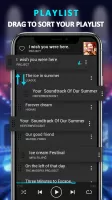



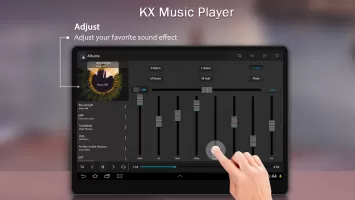
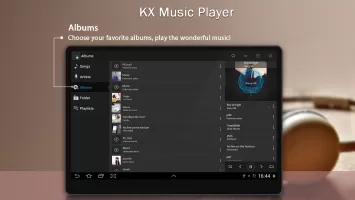



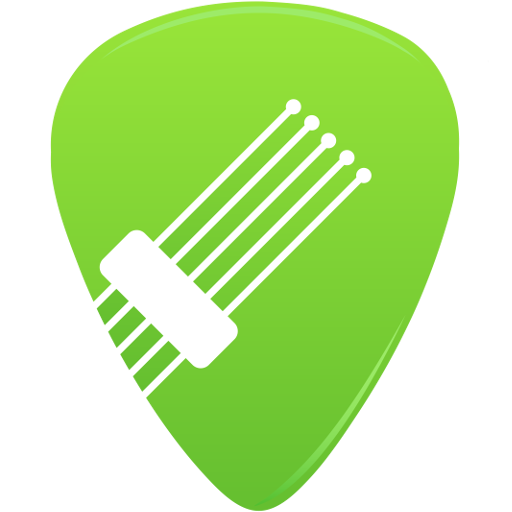








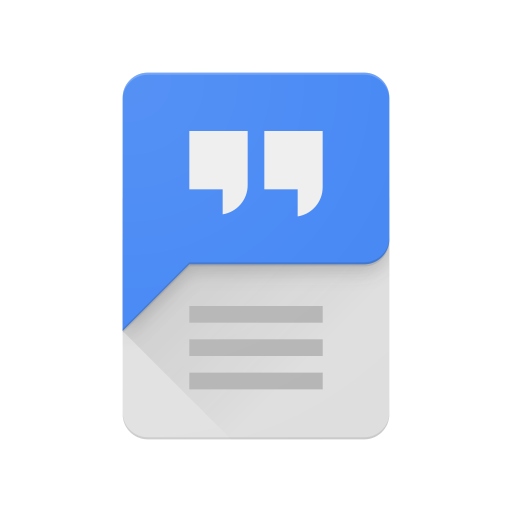







easy to use and organise
great layout and great audio
couple tracks with annoying distortions
need improvement on the balance L/R sound